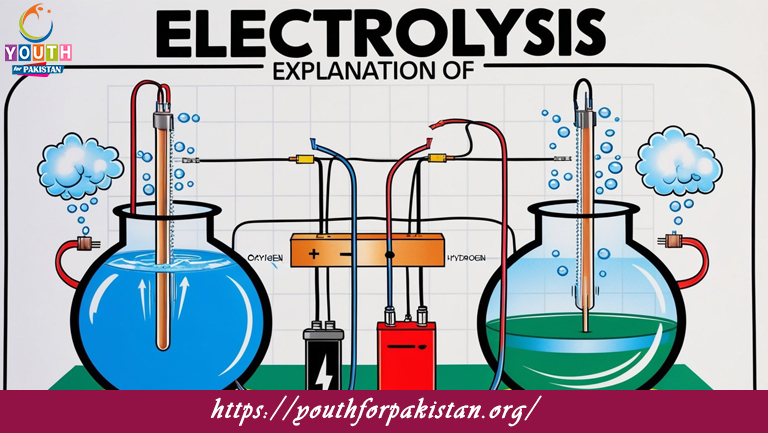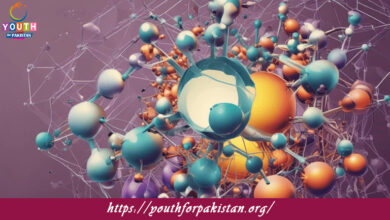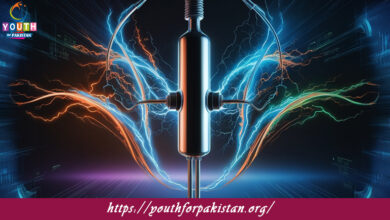Explanation Of Electrolysis MDCAT MCQs with Answers

Welcome to the Explanation Of Electrolysis MDCAT MCQs with Answers. In this post, we have shared Explanation Of Electrolysis Multiple Choice Questions and Answers for PMC MDCAT 2024. Each question in MDCAT Chemistry offers a chance to enhance your knowledge regarding Explanation Of Electrolysis MCQs in this MDCAT Online Test.
Electrolysis involves:
a) Breaking down a compound by heating
b) Separating a compound into its elements using an electric current
c) Mixing different compounds together
d) Dissolving a compound in a solvent
The process of electrolysis occurs in:
a) A galvanic cell
b) A fuel cell
c) An electrolytic cell
d) A concentration cell
In electrolysis, the substance that undergoes oxidation is:
a) The anode
b) The cathode
c) The electrolyte
d) The salt bridge
During electrolysis, the substance that is reduced is:
a) The anode
b) The cathode
c) The electrolyte
d) The salt bridge
The electrolyte in an electrolytic cell is:
a) The medium that conducts electricity
b) The electrode that gains electrons
c) The electrode that loses electrons
d) The voltage source
The reaction occurring at the anode during electrolysis is:
a) Reduction
b) Oxidation
c) Precipitation
d) Neutralization
The reaction occurring at the cathode during electrolysis is:
a) Reduction
b) Oxidation
c) Precipitation
d) Neutralization
In the electrolysis of water, which gases are produced?
a) Oxygen and nitrogen
b) Hydrogen and oxygen
c) Carbon dioxide and hydrogen
d) Hydrogen and chlorine
The electrode at which oxidation occurs is:
a) The anode
b) The cathode
c) The salt bridge
d) The electrolyte
The electrode at which reduction occurs is:
a) The anode
b) The cathode
c) The salt bridge
d) The electrolyte
The substance that is reduced in the electrolysis of molten sodium chloride is:
a) Sodium
b) Chlorine
c) Sodium chloride
d) Sodium hydroxide
The substance that is oxidized in the electrolysis of molten sodium chloride is:
a) Sodium
b) Chlorine
c) Sodium chloride
d) Sodium hydroxide
In the electrolysis of brine, chlorine gas is produced at:
a) The anode
b) The cathode
c) The salt bridge
d) The electrolyte
In the electrolysis of water, hydrogen gas is produced at:
a) The anode
b) The cathode
c) The salt bridge
d) The electrolyte
The purpose of adding a salt bridge in an electrolytic cell is to:
a) Connect the two electrodes and maintain charge balance
b) Increase the concentration of the electrolyte
c) Supply energy to the cell
d) Increase the temperature of the reaction
The electrolytic cell requires:
a) A spontaneous reaction to occur
b) An external power source to drive the reaction
c) No external energy
d) A catalyst to speed up the reaction
Electrolysis of a solution with a high concentration of chloride ions will primarily produce:
a) Hydrogen gas
b) Chlorine gas
c) Oxygen gas
d) Sodium metal
In electrolysis, the quantity of a substance produced or consumed is proportional to:
a) The temperature of the electrolyte
b) The concentration of the electrolyte
c) The amount of current passed through the electrolyte
d) The volume of the electrolyte
The Faraday constant is:
a) The charge of one mole of electrons
b) The temperature at which electrolysis occurs
c) The pressure at which electrolysis occurs
d) The volume of one mole of gas
During electrolysis, if the electrode is made of inert material, it:
a) Reacts with the electrolyte
b) Provides a surface for the reaction but does not participate in it
c) Acts as a catalyst
d) Changes the concentration of the electrolyte
In electrolysis, the process of breaking down a compound into its elements is driven by:
a) Chemical reactions
b) Electrostatic forces
c) An electric current
d) Heat energy
The process in which an electrolyte is decomposed by an electric current is known as:
a) Electrosynthesis
b) Electrolysis
c) Electroplating
d) Electrorefining
The efficiency of an electrolytic process can be increased by:
a) Increasing the temperature
b) Decreasing the current
c) Using a higher concentration electrolyte
d) Reducing the surface area of the electrodes
In the electrolysis of aqueous sodium chloride, hydrogen gas is produced at the:
a) Anode
b) Cathode
c) Electrolyte
d) Salt bridge
The electrolysis of copper(II) sulfate solution with copper electrodes results in:
a) Copper deposition at the cathode and oxygen evolution at the anode
b) Copper deposition at the anode and oxygen evolution at the cathode
c) Copper deposition at both electrodes
d) Sulfate deposition at the electrodes
Electrolysis of a solution of sulfuric acid produces:
a) Sulfur dioxide and hydrogen
b) Oxygen and hydrogen
c) Sulfuric acid and water
d) Sulfur and water
The main function of an electrolyte in electrolysis is to:
a) Conduct electricity
b) Provide a surface for the reaction
c) Change the temperature of the cell
d) Increase the pressure of the system
The electrolysis of an aqueous solution of sodium chloride involves:
a) Reduction of water at the anode
b) Oxidation of water at the cathode
c) Reduction of chloride ions at the anode
d) Oxidation of chloride ions at the cathode
The product at the anode during the electrolysis of brine is:
a) Sodium
b) Hydrogen
c) Chlorine
d) Water
During the electrolysis of a copper sulfate solution using copper electrodes, the anode:
a) Gains copper ions
b) Loses copper ions
c) Gains sulfate ions
d) Loses sulfate ions
The primary use of electrolysis in industries includes:
a) Electroplating
b) Distillation
c) Filtration
d) Evaporation
The process of electrolysis can be used to:
a) Separate elements from compounds
b) Mix different compounds
c) Measure the concentration of a solution
d) Increase the rate of reaction
In the electrolysis of molten aluminum oxide, aluminum is produced at the:
a) Anode
b) Cathode
c) Salt bridge
d) Electrolyte
The electrolysis of potassium iodide solution will primarily produce:
a) Potassium metal and iodine gas
b) Iodine gas and water
c) Potassium hydroxide and iodine gas
d) Potassium hydroxide and water
The decomposition of sodium chloride in electrolysis occurs at:
a) 0°C
b) 100°C
c) 800°C
d) 1200°C
In the electrolysis of copper(II) chloride solution, chlorine gas is produced at:
a) The anode
b) The cathode
c) The salt bridge
d) The electrolytic solution
The electrolysis of dilute sulfuric acid produces:
a) Oxygen at the anode and hydrogen at the cathode
b) Hydrogen at the anode and oxygen at the cathode
c) Sulfur dioxide at the anode and hydrogen at the cathode
d) Oxygen at the anode and sulfur dioxide at the cathode
The Faraday’s laws of electrolysis relate the amount of substance produced to:
a) The temperature of the solution
b) The pressure of the solution
c) The amount of electric charge passed through the electrolyte
d) The volume of the electrolyte
The efficiency of an electrolytic cell can be affected by:
a) The type of electrodes used
b) The color of the electrolyte
c) The shape of the cell
d) The brand of the electrolyte
In an electrolytic cell, the direction of current flow is:
a) From the anode to the cathode externally
b) From the cathode to the anode externally
c) From the anode to the cathode internally
d) From the cathode to the anode internally
If you are interested to enhance your knowledge regarding Physics, Chemistry, Computer, and Biology please click on the link of each category, you will be redirected to dedicated website for each category.





